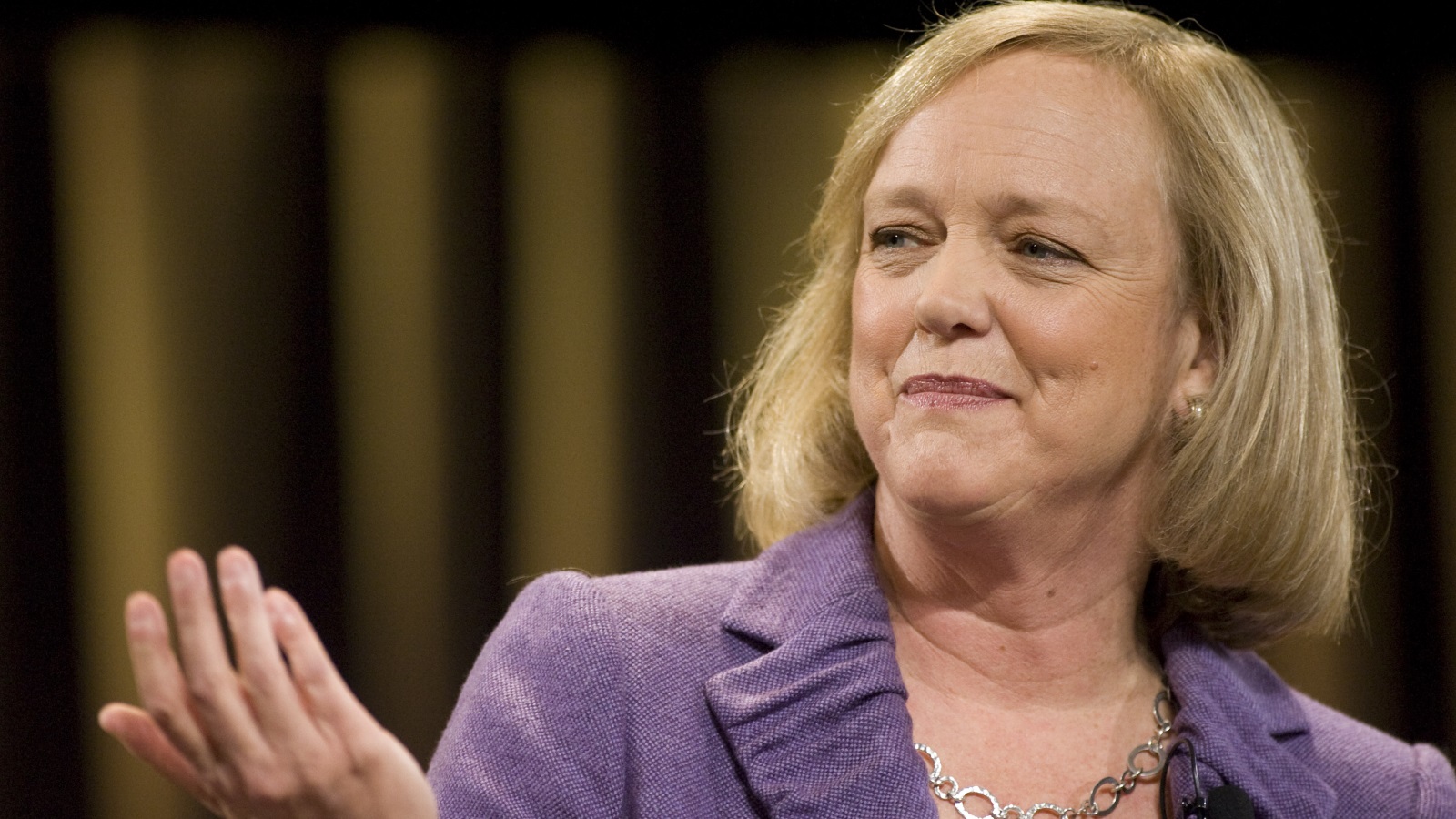 NEWS
NEWS
 NEWS
NEWS
 NEWS
NEWS
Hewlett-Packard Enterprise Co. distanced itself from fellow enterprise technology companies in two ways today: by announcing the spinoff of its troubled services business and by posting better-than-expected second-quarter results.
In a surprise move, the company said it’s merging its enterprise services business, which accounts for more than a third of its business, with Computer Sciences Corp. to create a company with a potential $26 billion in annual revenues. The deal news along with the earnings pushed shares up by more than 10 percent in after-hours trading.
For the quarter ended April 30, HPE earned a profit before certain costs of 42 cents a share, hitting analysts’ expectations and coming in near the high end of HPE’s own forecast range of 39 to 43 cents. Revenues were $12.7 billion, up 1 percent from a year ago, or 5 percent in constant currency. That’s higher than the $12.35 billion analysts on average had forecast. It was the first absolute revenue growth for the company in five years.
HPE also affirmed its 2016 guidance of $1.85 to $1.95 in adjusted earnings per share, and updated its outlook for GAAP diluted net earnings per share to between $1.68 and $1.78.
Investors likely were reacting less to the financial results and outlook than to the CSC deal. It values HPE’s services business at about $8.5 billion, less than half its revenues. The combined company would be No. 3 in enterprise services, behind IBM Global Services and Accenture PLC.
Expected to be closed by the end of March 2017, the deal will give HPE shareholders shares in both their own company and the combined new entity, half of which will be owned by HPE shareholders. HPE’s enterprise services sales declined 2 percent in constant currency in the quarter, to $4.7 billion.
Still, HPE’s results likely cheered investors as well, since they represented the second quarterly upside in a row. The company, the enterprise side of the former Hewlett-Packard Co. before the company split into two companies last November, set itself apart from a parade of enterprise companies reporting soft results, including IBM, EMC, Brocade, Juniper and parts of Cisco Systems.
“Today’s results represent our best performance since I joined in 2011,” Meg Whitman (pictured), HPE’s president and chief executive officer, said in a statement. “We also had strong quarterly performance in every one of our business segments and generated more than $500 million in free cash flow.”
Like other enterprise tech companies, HPE, whose main business is computer servers for data centers as well as tech services, is facing headwinds from the rise of cloud computing and cheaper flash memory-based data storage systems. After several years of 3 to 5 percent growth in servers, Morgan Stanley Research has forecast only 1 percent unit growth this year, and in a note to clients on May 20, it said even that tepid growth is in doubt. “Accelerated cloud migration is a structural hit to long-term server growth,” wrote analyst Katy Huberty, with HPE and Lenovo most at risk.
But HPE’s enterprise results did not appear to show an accelerated slowdown just yet. The enterprise group saw revenues rise 7 percent, or 10 percent in constant currency, to $7 billion. Before taking currency changes into account, server revenue was up 7 percent, storage up 2 percent, networking up 57 percent and technology services down 6 percent. Software unit revenues of $774 million fell 13% from a year ago, or 10% in constant currency. “You see the enterprise group on a roll,” Whitman said.
Moor Insights & Strategy President Patrick Moorhead said the results indicate that enterprise hardware markets could be rebounding. “It also says that the private cloud is starting to kick in,” he said.
Whitman’s strategy of selling off some operations and growing through its own technology development is in stark contrast to rival Dell’s acquisition push, especially its planned merger with EMC. “We don’t think there is a need for acquisitions, but if there’s the right company, we will move,” Whitman said on the earnings call.
However, Dell is also divesting some operations alongside the big merger. Dell sold its own services business, the former Perot Systems, in March for $3 billion to Japan’s NTT.
It’s not clear yet whether HPE’s research, such as its project called The Machine that’s intended to reinvent computer architecture, will materialize into products. But Whitman said the company is “seeing benefits of more focused R&D. We’re not taking our foot off the pedal.” She promised an update on The Machine and other planned products next month.
In the CSC deal, CEO Mike Lawrie will head the combined company as CEO and president. Whitman will join the new company’s board. The arrangement essentially unwinds Hewlett-Packard’s nearly $14 billion 2008 acquisition of Electronic Data Systems, the other outsourcing business founded by H. Ross Perot.
The divestiture of HPE’s services business could complicate the company’s efforts to provide a unified array of services for private cloud and hybrid cloud setups for customers, said Moorhead. But HP executives sought to provide assurance during the call that it could maintain a full service offering. Whitman said it has a deal with CSC to maintain sales relationships for three years, and said she hopes to do further business with the combined entity.
THANK YOU